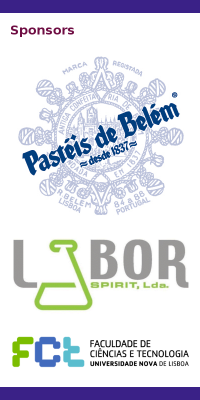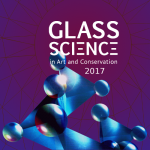|
Teresa Medici
Research Unit VICARTE, “Glass and Ceramic for the Arts”, FCT NOVA, Campus de Caparica, 2829- 516 Caparica, Portugal
|
|
Vidros da terra - Glass from the Earth. The contribution of archaeology to the history of medieval and early modern glass in Portugal
Archaeological investigation over the last 35 years has made significant contributions to our understanding of production and consumption of glass in medieval and early modern Portugal. Combining typological, stylistic and archaeometric approaches, the study of relevant archaeological assemblages of post-Roman glass made possible to propose hypotheses about origins and places of production, while iconography and documentary sources helped in understand its significance in the Portuguese society.
|
|
Ian Freestone
Institute of Archaeology, UCL, 31-34 Gordon Square, London WC1H 0PY, UK
|
|
Origins of stained glass in the great east window of York Minster, UK
Created by the master glazier John Thornton of Coventry between 1403 and 1405, the Great East Window (GEW) is the largest expanse of stained glass in the UK, comprising 311 individual panels, each containing hundreds of fragments of glass. It tells the history of the World from beginning to end, based upon the Books of Genesis and Revelation. The window is currently the subject of a major conservation project, which has involved its dismounting and the removal of the glass from the lead calmes. During the conservation process, the opportunity has been taken to sample glass from selected panels while they are in the conservation studio and subject them to physico-chemical analysis to determine their technologies, provenances and durabilities.
This paper focuses upon the provenance of the glass used in the window. The analysis progressed in a hierarchical fashion, so that large numbers of samples were analysed for major elements using SEM-EDXA or EPMA, a sub-sample for trace elements by LA-ICP- MS and a relatively small number for neodymium and strontium isotopes by thermal ionization mass spectrometry (TIMS).
|
|
Susanna Bracci
Institute for the Conservation and Promotion of Cultural Heritage – ICVBC-CNR Florence (Italy)
|
|
Analytical investigation of 14th century stained glass windows from Santa Croce Basilica, Florence. Glass types and weathering phenomena
The 'Basilica di Santa Croce' (Basilica of the Holy Cross) is the major Franciscan church in Florence (Italy) and the largest Franciscan church in the world. The construction began in 1294 and the church was consecrated in 1442. Since the beginning the Basilica became one of the most important religious centers and the most prominent families in Florence had their chapel in the church sumptuously decorated with frescoes and glass stained windows painted by the masters of that time. In the church there are 22 stained glass windows. During the last ten years the Opera di Santa Croce started a restoration campaign of some of the stained glass windows. In this paper the archaeometric data collected from six of the most important stained glass windows are compared. According to stylistic studies the six windows belong to a period spanning from the first/second decade to the end of the fourteenth century.
|
|
Lavinia de Ferri
Dipartimento di Filosofia e Beni Culturali, Università Ca’Foscari di Venezia, Dorsoduro 3484/D, 30123, Venezia, Italy
|
|
Study of Picenes beads from two Iron Age Necropolis
Two sets of beads coming from two Picene necropolises and dating back to between the 9th and the 6th centuries B.C have been investigated by applying a totally non-invasive and non-destructive approach. The collections are composed of glassy, shell and bone-based beads. The use of Reflectance Spectroscopy allowed the determination of the main chromophores used to color the blue glass beads, while Raman Spectroscopy resulted crucial in the determination of hematite as the coloring phase in a red bead and the differentiation of the glass- based samples from those obtained by other materials. In addition, X-Ray diffractometry was used to identify the opacifiers in the white and yellow beads.
|
|
Chloe Duckworth
Newcastle University
|
|
Glass recycling in the First Millenium AD: A Spatial-Temporal Approach
We have now reached a critical mass in published chemical data for the composition of ancient and historical glasses, particularly for the first millennium AD Mediterranean. For the journal Archaeometry alone, the average number of papers reporting the chemical composition of glasses has risen from 0.5 per issue (1970-1997) to 1.2 per issue (1998-present); similarly, a quick search of the scientific papers listed in Web of ScienceTM using key terms ‘glass’ and ‘archaeology’ returns 164 results for the years 1998 to 2017, compared with just 18 for the years 1970 to 1997 (for more details on these figures, see Duckworth forthcoming). Key compositional groups of glass have been defined and these have been linked to geographical provenances and to the use of certain raw materials in glassmaking.
Now that this point has been reached, we might – like the physicists of the late nineteenth century – ask whether all that remains is to fill in the details, run more analyses, and essentially refine the conclusions we already hold. As did the physicists of the early twentieth century, however, we are likely to discover that the current state of knowledge conceals a far more complex reality. In the case of glass composition, a key challenge to traditional provenance studies and their conclusions is the past practice of recycling.
The analytical study of glass recycling has recently gained important ground, especially for sample sets in which the patterns are clear (for example, Jackson and Paynter 2015). Yet current approaches to recognizing recycling rely upon chemical markers indicative only of some recycling practices, notably the mixing together of two different glass types. Used alone, a sample by sample approach to recognizing recycling cannot offer clues as to the extent of recycling ‘like with like’, or the relationship between glass object types and position on the ‘chaîne opératoire’ of glass recycling. My approach involves a combination of experimental and synthetic data, using published papers on glass composition to approach the small details indicative of recycling patterns over a large geographical area and temporal span. The initial results of the synthetic approach will be presented in this talk, and I shall discuss their place in the more complex and nuanced understandings of glass production and trade which are increasingly possible thanks to the volume of data now being generated.
|
|
Ivona Posedi
School of History and Heritage, University of Lincoln, Brayford Pool, Lincoln, LN6 7TS, UK
|
|
Archaeovitreological analysis by PIXE/PIGE of glass fragments from Miranduolo, Chiusdino, Italy
Twenty transparent glass fragments (colourless, yellow, azure and green hues) from Miranduolo have been analyzed by Particle Induced X-Ray Emission and Particle Induced Gamma-Ray Emission (PIXE/PIGE). The fragments are dated from mid-13th to mid-14th century AD, when the first Tuscan glass-making workshops emerged. All the glasses are of Na-Ca- Si composition, with 6 being made with unpurified Levantine plant ash, 12 made with purified Levantine plant ash, 1 with Barilla plant ash, and 1 with natron (with high magnesium). Continental calcite has been added to the glass batch as glass stabilizer in order to make the glasses more stable and resistant to corrosion.
|
|
Marco Verità
SLAMA Laboratory, Sistema dei Laboratori, IUAV University, Venice (Italy)
|
|
Analytical investigation of Renaissance Venetian enamelled glass. Potential and limits of portable X-ray fluorescence
In this work the analysis of enamelled and gilded Venetian Renaissance glass masterpieces from Italian Museums by using a non-invasive, portable X ray fluorescence technique (pXRF) was carried out. This research is part of a wider project called Cristallo, and aims at proving the reliability of pXRF in the quantitative evaluation of glass matrices in order to identify compositional differences able to discriminate copies and fakes of Renaissance enamelled Venetian glasses, like the so called façon de Venise glass. Promising results were obtained in the quantification of glass matrices and in the semi-quantitative enamel composition, making this technique a profitable solution for in situ chemical analysis.
|




